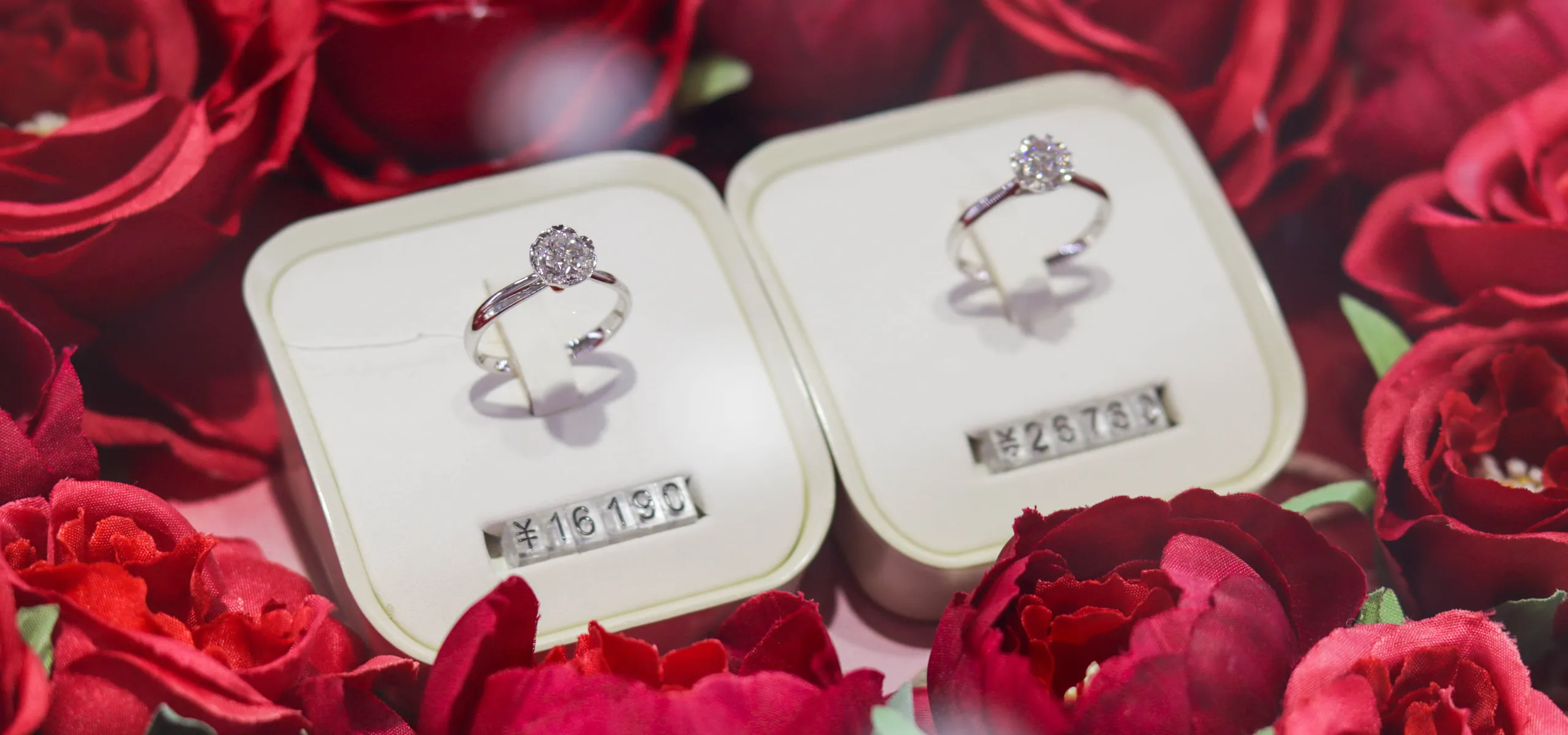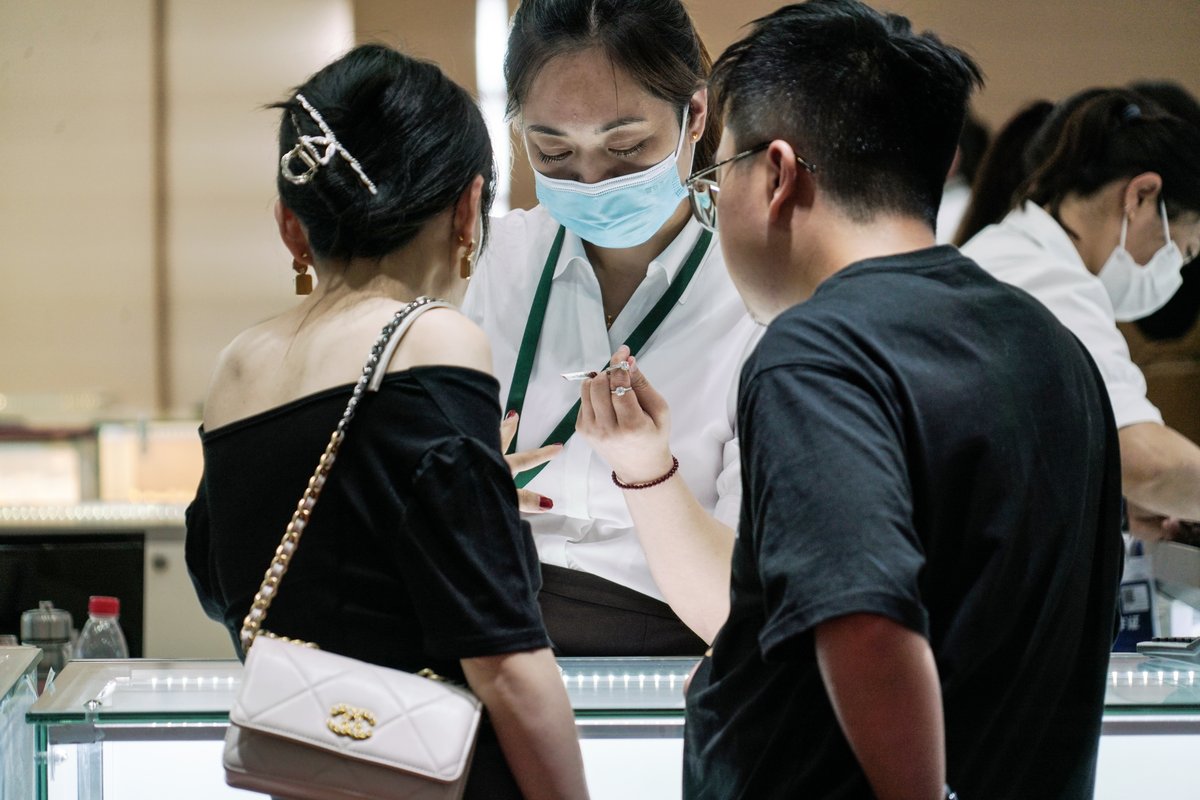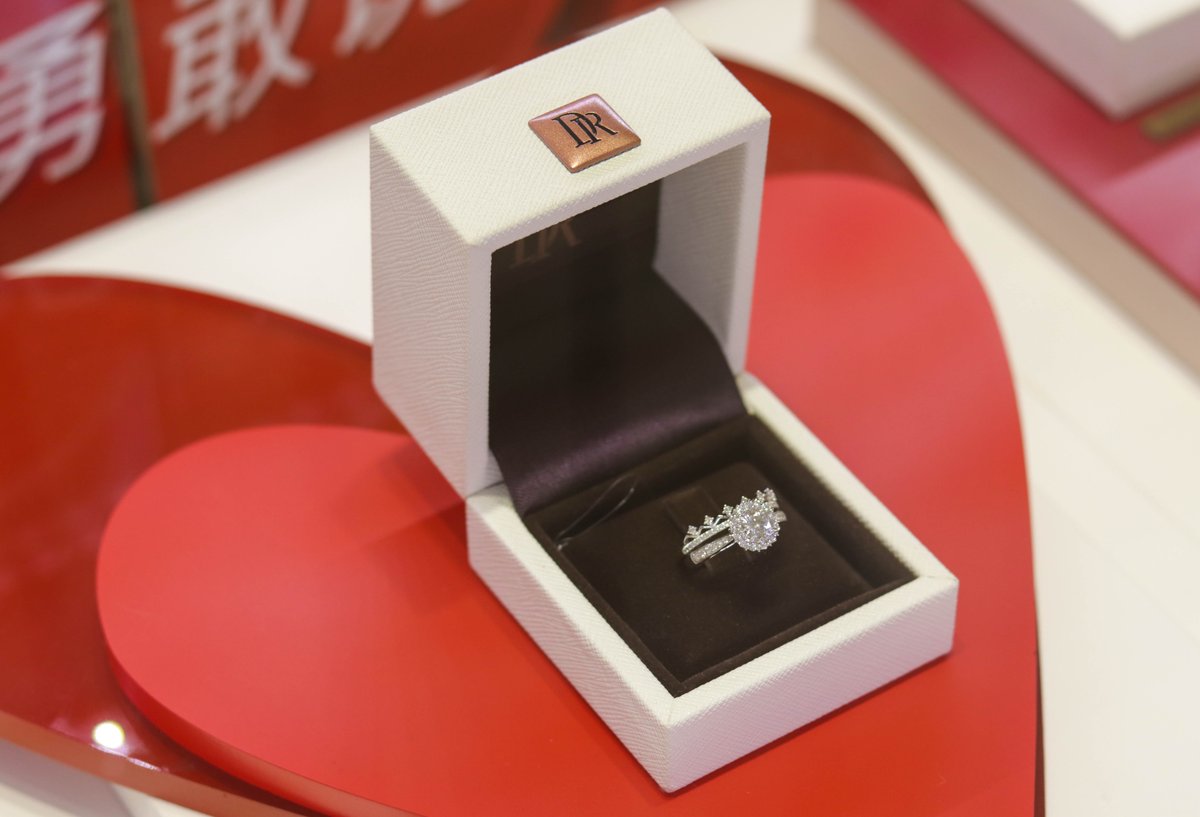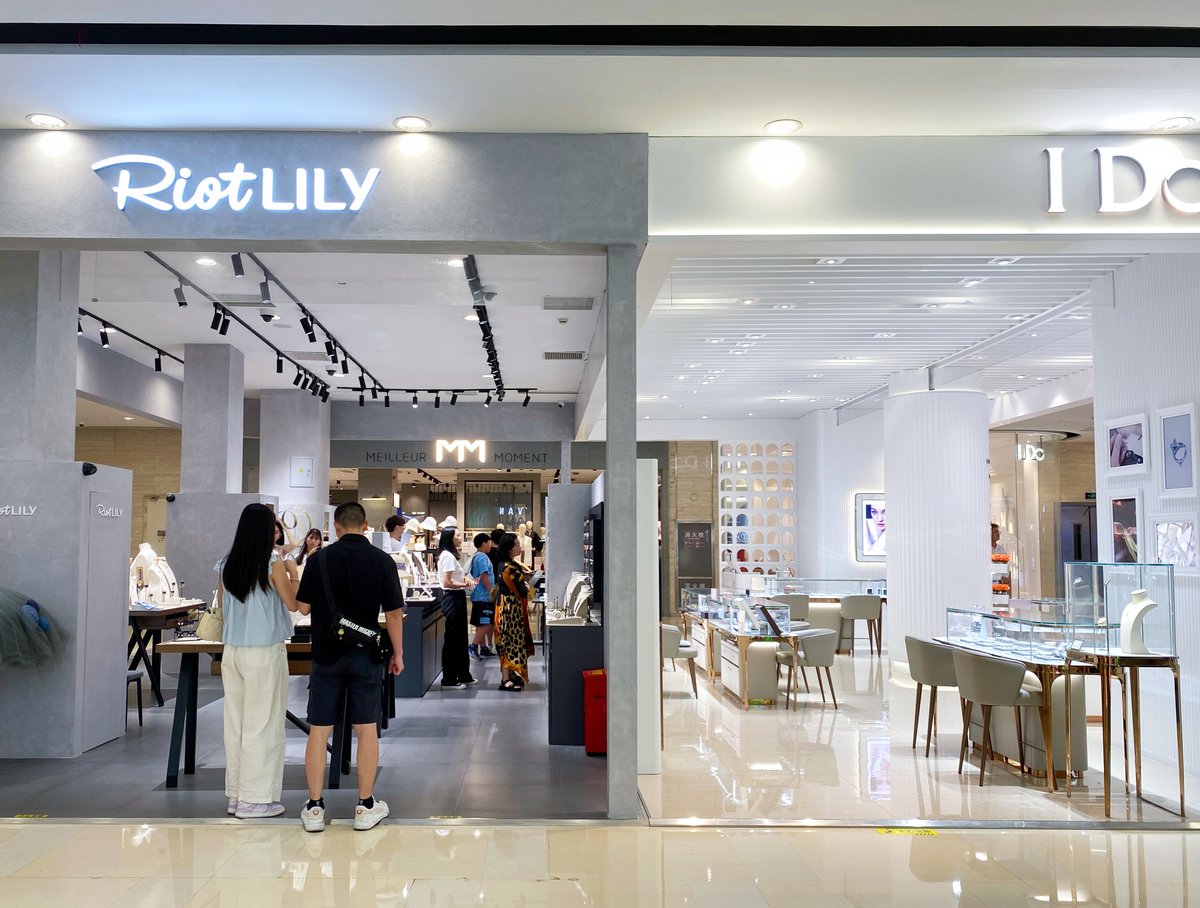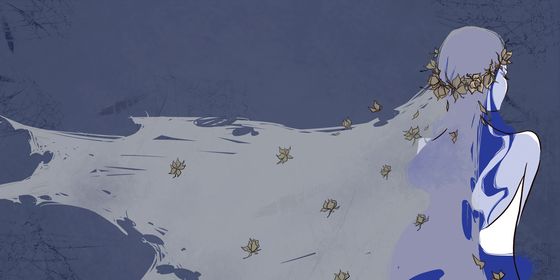As the diamond market plummets, young Chinese people are finding new alternatives to symbolize their love
Wang Xueying calls herself a fool for getting two diamond rings in 2022. One of them was a wedding band from her husband that cost over 15,000 yuan. Now, it could be worth just a tenth of that. “I feel like with the same price, we could have gotten a much larger one now,” the 23-year-old office worker from Liaoning province tells TWOC.
In China, diamonds soared in popularity at the beginning of the 21st century, making the country the world’s second-largest diamond market. But now the allure of the gem is fading fast.
Research from the Gems and Jewelry Trade Association of China shows the country’s diamond market size plummeted 18 percent in 2022 compared with the previous year, the biggest drop since the Shanghai Diamond Exchange, the only legal channel for the import and export of rough diamonds in the Chinese mainland, was established in 2000. I Do, a Chinese diamond ring brand known for its celebrity marketing, filed for bankruptcy in January this year after closing 205 offline shops the year before. Meanwhile, Darry Ring (DR), another popular brand, estimated its half-year net profit fell more than 90 percent in 2023, according to the company’s performance forecast released this July.
On Weibo (China’s Twitter), a trending story about a woman who bought a 10,000 yuan diamond ring in 2008, only to find it now valued at 10 percent of its original price when she tried to resell it this May, has been viewed more than 620,000 times and sparked heated debates about diamonds’ inflated prices.
Wang’s husband followed thousands of other young customers in buying the wedding band from DR last year. The company claims men can only customize one of their diamond rings in their lifetime as the brand requires them to register the purchase with their national ID (the brand prohibits women from buying diamond rings for themselves). This “one true love” marketing tactic has become a major driving force for sales among young consumers, with thousands posting their purchases on Weibo under the hashtag “I’m a DR fan,” which has garnered over 1.7 billion views since 2014.
Fading shine
Chinese people’s demand for diamonds can be traced back to the influx of Western lifestyle trends that swept over the country around the beginning of the 21st century. Before that, gold had been the gift of choice for couples. During traditional Chinese weddings, it’s customary for the husband’s family to offer the bride a set of sanjin, literally “three golds.” This set usually includes jewelry such as rings, earrings, and necklaces, and symbolizes the family’s acknowledgment and blessing of the marriage, while also serving as a reminder to the bride to embody the virtues of a respectful and disciplined daughter-in-law.
However, as notions of gender equality and choice in love gradually took hold in the minds of young Chinese, the symbolism of gold and its perceived connection to traditional arranged marriages began to lose its appeal. Many also consider the design of gold accessories tacky and outdated.
De Beer’s famous tagline “A diamond is forever” got translated into Chinese in 1993 and soon spread across the country. Western wedding traditions like wearing a white bridal veil and a black tie, and exchanging rings in front of friends and family, also quickly became popular among young couples.
Besides newlyweds, white-collar women also constitute a significant target demographic for diamond brands. With China’s urbanization and economic growth, more women have achieved financial independence, and buying a diamond brooch or earrings for themselves has become not only a display of one’s fashion taste but an expression of self-love.
Even as the global financial crisis unfolded in 2009, the Shanghai Diamond Exchange achieved steady growth, with import and export turnover exceeding 1.5 billion US dollars, making China the world’s second-largest diamond market after America, which was valued at 22 billion at the time.
However, with marriage rates plummeting and an economic slowdown brought on by the pandemic, Chinese consumers are becoming less willing to part with big sums of cash for luxury items. A report by the Central Bank of China in 2022 shows that over 60 percent of people now prioritize boosting their savings rather than spending and about half of the population considers the current job market “difficult” or “uncertain.” Less willing to spend on expensive diamonds, many young couples are returning to tradition and opting for gold again.
Gold is considered a much safer investment. As long as the purity of the gold is sufficient, most jewelry stores are willing to buy it back, offering instant liquidity. Diamonds, on the other hand, are often challenging to appraise accurately. Jewelry stores are hesitant to repurchase diamonds, and if they do buy the price is likely to be far lower than the gem’s original value. Diamonds smaller than one carat are almost worthless because there is such a glut of them on the market.
“I feel like buying diamonds is like paying an ‘IQ tax,’” 25-year-old Zhu Huimin from Guangdong province tells TWOC. She used to sell jewelry through live streaming and believes that compared to gold, diamonds are highly volatile in price and retain very little value. She has also given up on the idea of getting a diamond ring for her engagement: “I prefer my future husband to buy me a gold band when he proposes. That’s enough for me,” she says.
In contrast to her customers who buy customized diamond rings for weddings and anniversaries, Zhu and her boyfriend enjoy a more pragmatic type of romance. “People buy diamond rings mainly for ceremony, but there are more economical ways to get the sense of ritual,” she says. Her first luxury gift from her boyfriend was a one-gram gold bean, which cost around 410 yuan.
Zhu’s boyfriend buys her a gold bean every month as a way of saving for their future. Many young Chinese are doing the same: buying gold of a particular weight, usually one or five grams, on a regular basis as if saving cash.
Forever changing
As consumer habits shift, some struggling diamond brands are revamping their products. For instance, DR has started to explore the gold accessory market, launching a series of pure gold collections for the first time. Other traditional jewelry brands like Chow Sang Sang have also expanded their collection of gold accessories, offering a more diverse array of styles to cater to the preferences of young consumers.
“I feel like there are more choices when it comes to buying gold rings now, and they could also be as pretty as diamond ones,” Dong Ya, a full-time mom in her 30s, tells TWOC. Dong, who lives in Shaoxing, Zhejiang province, bought a gold ring for herself after finding a design she liked from her friend’s post on WeChat. “[Other] people buy diamond rings to propose. As for me, I simply want to please myself, so I will buy a gold one,” she says. “It’s also cost-effective and holds its value well.”
For those who still favor diamond rings for their ceremonial subtext, lab-grown diamonds—indistinguishable from natural ones to the untrained eye—are a cheaper alternative.
According to the Gems and Jewelry Trade Association of China, the country’s annual production capacity of lab-grown diamonds is 9 million carats, accounting for about 40 percent of global production. Meanwhile, China’s demand for lab-grown diamonds has grown significantly from 5 million yuan in 2014 to over 1.36 billion in 2022, further driving down prices for natural diamonds.
Zhu Wencan (no relation to Zhu Huimin) started his own business selling lab-grown diamonds in 2020. He believes that China will dominate the lab-grown diamond consumption market in the coming years, surpassing the current leader, the US.
“The biggest appeal is the price,” Zhu Wencan says. “At the counter of [Hong Kong-based jewelry conglomerate] Chow Tai Fook, the price of a carat of natural diamonds is more than 100,000 yuan while the price of same quality lab-grown diamonds is only around 4,000 to 6,000 yuan.”
Zhu Wencan tells TWOC that he used to sell around 30 to 40 pieces per month in 2022, but now that number has more than tripled to 150. But Zhu admits that the price per order has dropped as people become more cautious in their diamond investments.
Most diamond sellers hoping for a market rebound after pandemic restrictions were lifted in China late last year have been left disappointed. As China’s marriage rate continues to decline (for the ninth consecutive year in 2022) and investment habits transform, selling diamonds solely under the banner of love is no longer a viable option.
“Diamond marketing must keep up with times,” Zhu Guangyu (no relation to Zhu Huimin or Zhu Wencan), the founder of industry information site Diamond Spectator, told the Chinese tech website All Weather TMT this February. “The industry has lived on a single concept for 100 years, and it’s now running into trouble.”
Wang Xueying at least finds solace in the thought that the value of an engagement ring is beyond monetary measure. “It’s unique to our marriage, so I won’t sell it anyway. I don’t know the exact market value of the two diamond rings right now, but what I really care about is the value it holds in my heart.”
Additional reporting by Hayley Zhao





